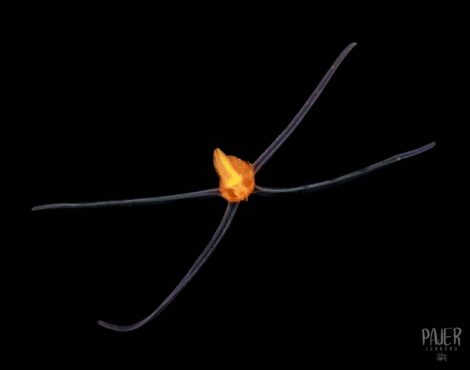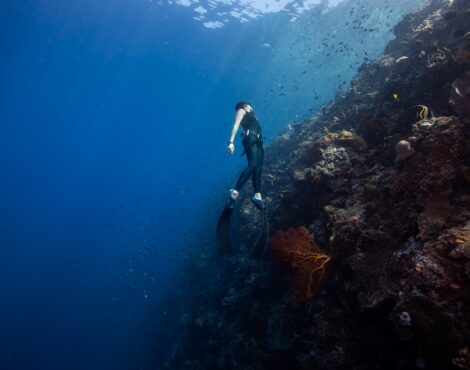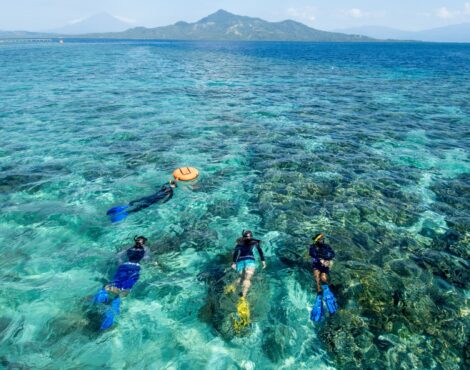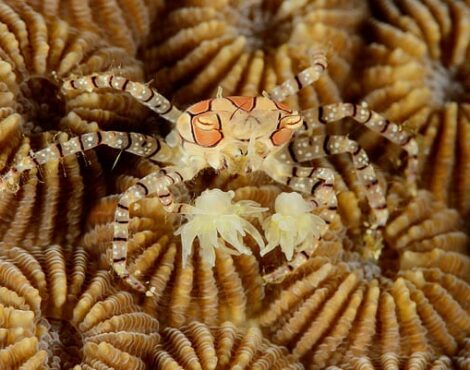
Most people visit Bunaken Marine Park to experience the amazing marine life that can be found here. The waters surrounding North Sulawesi are among the richest on the planet, and Bunaken Marine Park boasts the highest levels of marine bio-diversity in North Sulawesi.
But it is not only the waters that are rich in life. The forests are too, and it would be a great shame to visit the area without experiencing the terrestrial wildlife too. One of our most popular day trips is to a forest reserve named Tangkoko, which can be reached in roughly two hours from Siladen.
In Tangkoko, you can spot toucans, macaques, tarsiers, and tarantulas, but today, we will be talking about a marsupial that is endemic to Sulawesi â the Sulawesi Bear Cucus.
What is a Sulawesi Bear Cuscus?
Scientifically known as the Allurpos ursinus, the Sulawesi Bear Cucus is a species of arboreal marsupial that is endemic to Sulawesi and a few of its closest islands.
Marsupials are a group of mammals that are endemic to Australasia and the Americas, and they are perhaps best known for their pouches â which are used to carry the young. Sulawesi is the most western part of Indonesia where marsupials can be found due to Wallaceâs Line â a boundary line that marks a faunal transitional zone between Asia and Australia.
What does a Sulawesi Bear Cuscus look like?
They are named Sulawesi Bear Cuscus after their thick, bear like pelt. They have stubby faces and short, furry ears. Their fur ranges from black to grey to brown, with a lighter coloured belly and extremities. They have large, protruding eyes like a lemur, which may lead people to believe they are nocturnal â they are actually diurnal.
Fully grown, they can grow to between seven and ten kg, and have a body length of up to 60cm, with a tail that is almost as long as the body.
Where do Sulawesi Bear Cuscusâ live?
The Sulawesi Bear Cuscus can be found throughout most of Sulawesi and a few neighbouring islands, although due to loss of habitat, they are becoming more isolated from each other â sadly they are considered vulnerable on the IUCN red list.
They prefer to live in undisturbed lowland forests, such as our local Tangkoko forest reserve â spending most of their lives high up in the forest canopy, using their elongated claws and long tails to effortlessly navigate the forest, manoeuvring slowly from branch to branch.
What does a Sulawesi Bear Cuscus eat?
Like most other marsupials, the Sulawesi Bear Cuscus is a herbivore, eating only vegetation. Most of its diet is made up of leaves, but it will also each buds, flowers, and unripe fruit.
Their diet is both low in nutrients and hard to digest, so the cuscus tends to move very slowly and spends much of the day resting to aid digestion â much like their better known Australian cousins, the Koala.
Sulawesi Bear Cuscus reproduction
Not much is known about the private life of Bear Cuscusâ. They tend to be spotted either in pairs, or groups of three or four. Whether this is to do with mating or not is not really known. Because they live high in the canopy, and they are shy, it is difficult to gather data on them.
As a marsupial, female Sulawesi Bear Cuscusâ have a pouch which is used for rearing their young. The babies are born very immature and undeveloped, and they will stay in the pouch for approximately eight months as they continue to develop. Once they are strong enough to live outside the pouch, they will venture out on their own, however at first they will still return to the pouch for safety.
Where can I see a Sulawesi Bear Cuscus?
If you want to see one of these bizarre yet beautiful creatures, you will need to join one of our day trips to the Tangkoko forest reserve. We can never guarantee a sighting, however the bear cuscus is one of the more commonly spotted animals, although you may need a pair of binoculars to get a good look â and you will defiantly need a good zoom lens and a steady hand (or tripod) for your camera if you want to get a good picture. Other animals you might see on the trip include crested macaques, tarsiars, flying geckos, snakes, tarantulas, and many different types of birds.
The trip itself takes around ten hours, leaving from Siladen before lunch, and arriving back at around 20:00 just in time for dinner â unless you would like to eat dinner before returning, giving you a more relaxed, but slightly longer day. If you are interested in joining our Tangkoko forest reserve day trip, speak to someone from the dive centre or front office, and they can make all the arrangements for you. More information about the trip can be found on our experiences page.
.





